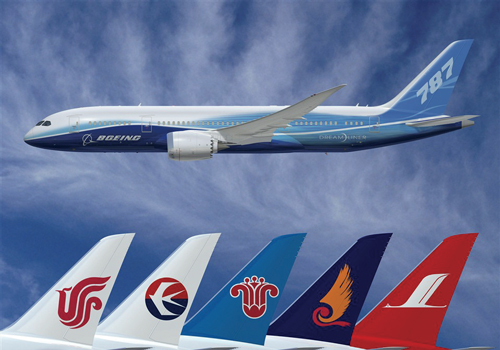Dreamliners: no effect on cargo
24 / 01 / 2014

THE US Federal Aviation Administration (FAA) decision to ground all B787 Dreamliners effectively suspends all their operations worldwide, until further notice.
Lithium-ion battery malfunctions, a cracked windscreen, braking problems and an electrical fire are the litany of reasons the Boeing flagship aircraft is in trouble.
Depending on how long it takes to get these fuel-efficient aircraft back in the air, this ruling could have a serious impact on passenger air travel, but not particularly on an air cargo industry already suffering from overcapacity in the marketplace.
Analysts estimate that with 50 of the aircraft already in service – each offering up to 15 tonnes of belly capacity – around 100 flights a day will be disrupted.
The B787 uses 20 per cent less fuel than today’s comparable aircraft and offers carriers up to 45 per cent more cargo revenue capacity, than similar-sized aircraft, according to a Boeing statement.
The direct impact in the USA will be minimal — the only airline currently operating the type is United, which has six B787s in service on business routes like Chicago to Houston, Los Angeles to Houston and LA to Tokyo.
United has some 700 aircraft in its fleet and therefore can easily substitute other aircraft. The airline’s aim to place all its B787s on long-haul routes in order to reap significant savings in fuel will be on hold.
Internationally, though, there is a bigger fallout.
Japan is particularly affected, because 24 Dreamliners have been operating domestic and international services, 17 of them with launch customer ANA, and seven at Japan Airlines.
LOT Polish Airlines, currently the only European carrier operating a B787, had the Dreamliner on its inaugural flight from Warsaw to Chicago when the grounding was announced. It will now remain at O’Hare during the grounding.
In South America, LAN Airlines instantly cancelled all services on its three B787s and Air India, which has six, has followed suit.
Analysts, meanwhile, worry about Boeing’s reputation.The Dreamliner had generated a lot of goodwill for its passenger-pleasing qualities, such as its larger windows, mood lighting, and better cabin humidity.
The previous time this type of aircraft ‘scare’ happened, in 1979, circumstances were quite different because the DC-10 had been in operation for at least two years, with more than 100 in service around the world. Then, an American Airlines DC-10 crashed in Chicago, killing all 271 people on board.
The FAA grounded the aircraft for 37 days—and its reputation never fully recovered.
As for the Dreamliner’s problems, it is hard to imagine a speedy salvation. Observers expect the inquiry and corrective actions to take many weeks – or even months – to resolve.
For the air cargo business, it is not a great problem.














